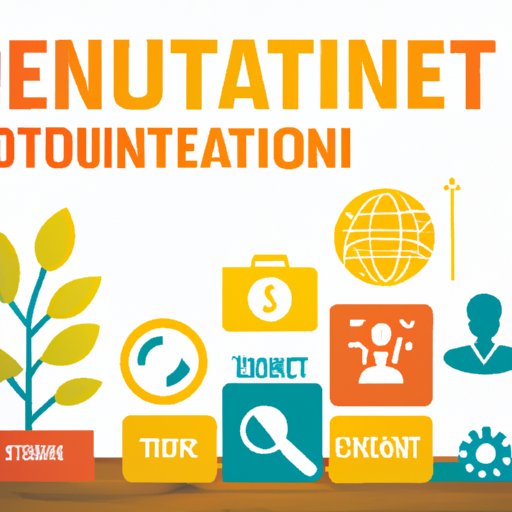Introduction
Having the right people in the right positions is key to the success of any organization. A talent strategy can help organizations achieve this goal by providing a roadmap for how to identify, acquire, and retain talent. In this article, we will explore what a talent strategy is, the components of one, and how to evaluate its success.
Definition of a Talent Strategy
A talent strategy is defined as “a comprehensive plan of action used to attract, develop, motivate, and retain the best people for an organization.” It encompasses all aspects of managing an organization’s workforce, from recruitment and selection to performance management and training. The goal of a talent strategy is to ensure that an organization has the right people in the right roles, so that it can achieve its business objectives.
Overview of the Problem
The need for a talent strategy is driven by the rapid changes taking place in the workplace. There is a growing demand for skilled workers with specialized knowledge and abilities, and organizations must be able to quickly adapt to changing conditions. A talent strategy provides the framework for identifying and developing the skills needed to remain competitive in today’s market.
Defining the Components of a Talent Strategy
Creating a successful talent strategy requires an understanding of the various components that make up the strategy. These components include:
Analyzing Your Organization’s Needs and Opportunities for Talent Development
The first step in creating a talent strategy is to assess your organization’s current needs and opportunities for talent development. This assessment should include an analysis of the organization’s current workforce, and an understanding of the skills and competencies required to meet the organization’s goals. It should also involve an examination of the external environment, including trends in the labor market, in order to identify potential sources of talent.

Developing a Talent Acquisition Plan
Once you have identified the skills and competencies needed, you can begin to develop a talent acquisition plan. This plan should include strategies for recruiting and selecting the best candidates, as well as plans for onboarding and integrating them into the organization. It should also include strategies for compensating and retaining top talent.
Establishing a Performance Management System
Performance management is an integral part of any talent strategy. An effective performance management system should provide clear expectations, feedback, and rewards for employees. It should also include processes for monitoring and evaluating employee performance and providing feedback and coaching to help employees reach their goals.

Crafting an Effective Retention Plan
Retaining top talent is essential to any organization’s success. An effective retention plan should include strategies for recognizing and rewarding top performers, as well as programs to support career development and growth. Additionally, it should include policies and procedures for addressing employee grievances and resolving conflicts.

Implementing a Comprehensive Training Program
Training and development are essential components of any talent strategy. A comprehensive training program should include both formal and informal learning opportunities, such as on-the-job training, seminars, webinars, and e-learning courses. It should also include strategies for assessing employee progress and providing feedback to ensure that employees are developing the skills they need to succeed.

Evaluating the Success of Your Talent Strategy
Once you have developed a talent strategy, it is important to evaluate its success. There are several tools that can be used to measure the effectiveness of a talent strategy, such as employee surveys, interviews, and focus groups. Additionally, it is important to determine what constitutes success in terms of the goals of the organization and the objectives of the talent strategy.
Conclusion
A talent strategy is an essential tool for any organization to ensure that it has the right people in the right roles. When developing a talent strategy, it is important to analyze the organization’s needs and opportunities for talent development, develop a talent acquisition plan, establish a performance management system, craft an effective retention plan, and implement a comprehensive training program. Additionally, it is important to evaluate the success of the talent strategy using measurement tools and determining what constitutes success.
Summary of Key Points
In summary, a talent strategy is a comprehensive plan of action used to attract, develop, motivate, and retain the best people for an organization. The components of a talent strategy include analyzing the organization’s needs and opportunities for talent development, developing a talent acquisition plan, establishing a performance management system, crafting an effective retention plan, and implementing a comprehensive training program. Additionally, it is important to evaluate the success of the talent strategy using measurement tools and determining what constitutes success.
Final Thoughts
A talent strategy is an essential tool for any organization to ensure that it has the right people in the right roles. By following the steps outlined in this article, organizations can create an effective talent strategy that will help them meet their business objectives and remain competitive in today’s market.
(Note: Is this article not meeting your expectations? Do you have knowledge or insights to share? Unlock new opportunities and expand your reach by joining our authors team. Click Registration to join us and share your expertise with our readers.)
